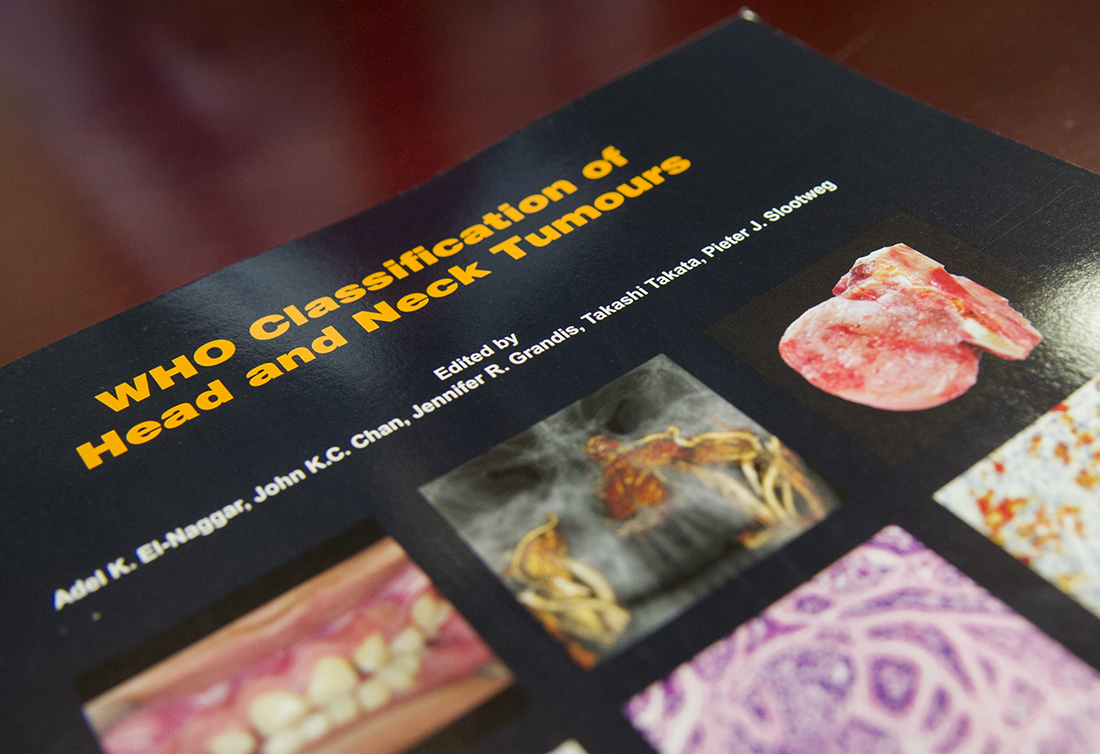Assessing tumors of the head and neck

No matter what organ system in the body may be affected, if a tumor, cyst or lesion is known to exist, the World Health Organization has a classification for it. In fact, there are entire books on the subject, updated every decade or so. These classifications have become the benchmark for pathologists, oncologists and health care providers in diagnosing and treating patients with various tumors.
One such text, the WHO Classification of Head and Neck Tumours, published this January, includes expertise from Texas A&M College of Dentistry faculty member Dr. John Wright, Regents Professor and head of diagnostic sciences.
Of the 33 pathologists worldwide who contributed to the 347-page text, Wright was one of just six oral pathologists. His efforts toward the project concentrate on odontogenic tumors in addition to cysts and tumors of the oral cavity and tongue.
These tumors are one of the few areas of pathology unique to dentistry, Wright says, because they arise from the same tissues that make our teeth.
“It is important for dentists to be familiar with the odontogenic lesions because very few physicians are,” Wright says. “The new WHO classification reflects the evolving knowledge of odontogenic lesions, and I believe dentists have a responsibility to remain cognizant of the changes, just as they should for the evolving landscape of restorative dentistry.”
 This is the fourth edition of the classification, which was first published in 1971. With each update, pathologists and medical experts pore over evidence-based research in the form of peer-reviewed publications and factor in technological advancements that constantly transform the medical landscape.
This is the fourth edition of the classification, which was first published in 1971. With each update, pathologists and medical experts pore over evidence-based research in the form of peer-reviewed publications and factor in technological advancements that constantly transform the medical landscape.
“One of the biggest trends is our current ability to explore the molecular and genetic changes in all of these tumors,” Wright says. “Most of this information was not available in the latest edition in 2005 but is added to the current edition with a discussion of its biologic relevance to diagnosis and patient care.”
The manual’s reach extends beyond the health professional to influence medical coding and even billing matters.
“The WHO classification is considered one of the gold standards for the existence of various tumors,” Wright says. “For instance, in the U.S., a pathologist must use a diagnosis code in order to get paid for diagnosing a tumor. Many pathologists use ICD — International Classification of Diseases — codes. In 2005, the WHO reclassified the odontogenic keratocyst as a tumor, and in the latest edition of the ICD, keratocyst was recoded as a tumor.”